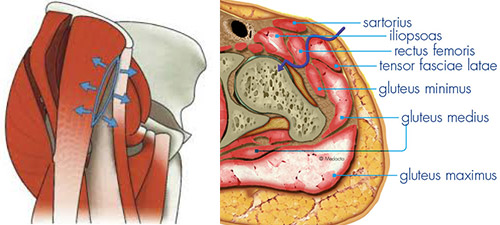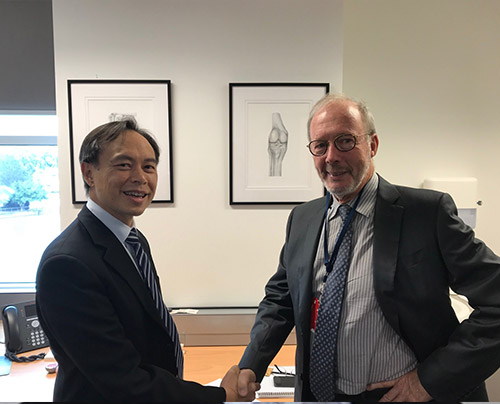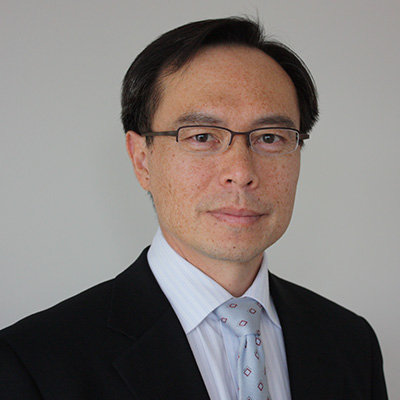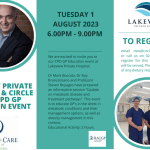Anterior Hip Replacement

Anterior surgical approach to the right hip

…a Surgeon’s personal experience as a patient at Lakeview Private Hospital and the joy of being able to climb back onto his 50 year old sailing boat.
Total hip replacement is a highly effective treatment of hip arthritis. Despite this, there is still a recovery period of 6-8 weeks during which the patient loses some of his/her independence. Restrictions during this period include driving, sitting on a low seat, and bending forward (e.g., to reach the foot or put on shoes and socks). If the patient lacks social support and care, an inpatient stay for perhaps 2 weeks in a rehabilitation unit may be required. And yet, earlier this year Dr Graeme Ctercteko, Colorectal Surgeon at Lakeview Private Hospital and Head of Colorectal Surgery at Westmead Hospital, found himself up and “sailing” again within a month of hip replacement surgery. Having decided at the end of 2017 that hip replacement was unavoidable, Dr Ctercteko had turned to a fellow surgeon at Lakeview Private Hospital Dr Frederick Hoe, Hip & Knee Surgeon at Lakeview Private Hospital Orthopedics.
“The pain throughout the past year had become intolerable,” explains Dr Ctercteko. “Apart from it having an impact on my quality of life at home, it had got to the stage where I was unable to climb out of my dinghy into my sailing boat. This of course was the final straw.”
Less invasive .. less cutting .. quicker recovery
Traditionally, hip replacements in Australia in recent years have been performed via the posterior approach which generally results in significant movement restrictions and fairly lengthy recovery periods where the patient can experience a fair degree of pain, weakness of the muscles, disability as well as a fear of dislocation. In order to implant the prostheses, the surgeon has to gain access to the hip joint which, being such a deep structure, involves cutting of muscles and tendons which causes postoperative pain and weakness. Until the muscles and tendons heal, the patient is at risk of dislocating the prosthetic joint and therefore activities such as bending are not advised for the first 6-8 weeks.
Dr Hoe advised his colleague that an anterior hip replacement procedure might be preferable to the more common posterior procedure. Apart from a quicker recovery period, the anterior procedure provided a number of other significant benefits. Anterior hip replacement achieves access to the hip joint via a small incision at the front and by using natural planes or gaps between the muscles. In this way, it avoids or minimises the cutting of important muscles and tendons. “The technique requires the use of special tools and retractors, together with a special leg holder that helps the surgeon manipulate the leg during the operation,” explains Dr Hoe. “Anterior hip replacement is not a new surgical technique but it has not been popular in the past because it gave relatively poor access to the hip joint. In France since 2004 however, there has been a revival of the anterior approach due to the invention of new surgical tools which have allowed the surgery to be performed more efficiently. Currently, approximately 80% of hip replacements performed in Paris are via the anterior approach. The increase in its popularity is largely due to the fact that the less invasive procedure and the reduction in the cutting of the muscles results in a far quicker recovery.”
“The risk of dislocation is also very low,” continues Dr Hoe, “and as a result there is no restriction on bending or posture. Patients are mobilised on the afternoon of the surgery and can be discharged home within 3-4 days. Some patients even start driving and return to sedentary occupations within 2-3 weeks.”
Anterior hip surgery is performed through an 8-10 cm incision on the upper part of the thigh just lateral to the groin crease. It requires some special instruments, and x-rays are used during surgery to check the correct position of the prostheses. The main disadvantage of the technique is that due to the smaller incision, it is more demanding for the surgeon. The surgeon is required to undergo additional training courses before taking up the technique and there is a slightly increased risk of complications in the first 50 cases of the surgeon’s learning curve. It is worth noting that anterior approach may not be suitable in cases of extreme obesity, unusual bony anatomy and revision surgery. Anterior hip replacement was first performed in Australia in 2006 and is gradually gaining popularity among surgeons. Dr Hoe started using the anterior hip replacement 10 years ago and now performs most of his hip replacements via this approach.
Back sailing within a week…
After surgery, Dr Ctercteko stay in the Lakeview Private Hospital Rehabilitation unit was a modest three nights. “The staff were wonderfully attentive and my room had a very pleasant view of the surrounding lake,” says Dr Ctercteko. “The only problem was that the view was whetting my appetite more and more to get back onto my sailing boat.”
Only one week after surgery however Dr Ctercteko was on a flight to Hobart where he was to join a friend on a sailing trip on Hobart’s Derwent River. Two weeks later he was behind the wheel or his car and then, only one month after surgery, he found himself returning to work.
“It’s been a rapid and uncomplicated recovery period,” explains Dr Hoe. “Certainly, the anterior procedure has enabled Dr Ctercteko to return to the quality of life he enjoyed far sooner than a posterior procedure would have allowed.”
James Croll is Marketing and Events Manager at Lakeview Private Hospital. He was talking to Dr Frederick Hoe, Hip and Knee Replacement Surgeon at Lakeview Private Hospital and Dr Graeme Ctercteko.

Suite 1, Level 1, Lakeview Private Hospital, 17-19 Solent CIrcuit, Bella Vista, NSW 2153
Phone: (02) 8711 0100
Website: https://lakeviewprivate.com.au/specialist/dr-frederick-hoe/
Dr Frederick Hoe
M.B.,B.S. (Hons) UNSW, F.R.A.C.S, F.A.Orth.A.
Hip and Knee Surgeon
Dr Frederick Hoe graduated with Honours in Medicine from the University of NSW (1990) and was selected for the advanced Orthopedic training program by the Royal Australasian College of Surgeons in 1996. He obtained his Fellowship of the Royal Australasian College of Surgeons in 1999, and gained his qualifications as a specialist Orthopedic Surgeon.
He has been providing care of orthopedic patients in Sydney for more than 10 years. He is now offering selected patients the benefits of anterior hip replacements.





